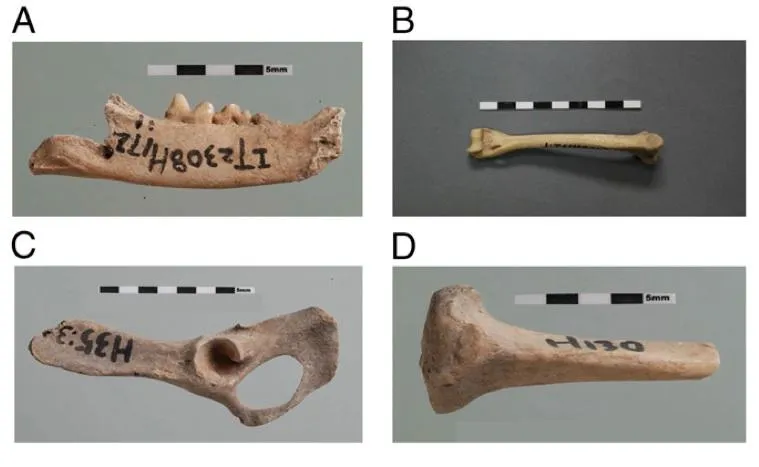Domestic Cats Enjoyed Village Life in China 5,300 Years Ago
Eight cat bones discovered in an archeological site in China provide a crucial link between domestic cats’ evolution from wildcats to pets
/https://tf-cmsv2-smithsonianmag-media.s3.amazonaws.com/filer/fa/f4/faf45c6b-4eb3-4ad0-b904-fd6d37e94893/cats.jpg)
Humans who share a home with a feline friend are taking part in a millennia-old tradition of cat-person cohabitation. Thanks to their cute looks and quirky personalities, cats are second only to dogs as humanity's favorite pet. Today, more than half a billion cats live around the world, demonstrating their universal success at transcending cultures and geographies.
Despite cats' central place in so many of our lives, however, the history of our species' mutual relationship remains murky. The earliest evidence of people and cats sharing space turned up in a 9,500 year-old gravesite in Cyprus where a person and a wildcat were buried together. After that, however, examples of human-cat relationships do not surface again until about 4,000 years ago, in Egyptian artwork depicting domestic cats. DNA analysis shows that domestic cats spun off from Near Eastern wildcats, but historical evidence explaining the leap from feral animal to fawned-over companion is lacking.
Now, researchers from China and the U.S. have at last discovered a crucial page filling in part of history's blank stretch. Cat bones they found at an archeological dig site in northwest China's Shaanxi province date back to about 5,300 years ago. The bones outdate previous assumptions of cat arrival in China by about 3,000 years and also provide what seems to be the first concrete evidence bridging wildcats with domesticated cats, the researchers report in Proceedings of the National Academy of Sciences.
The authors uncovered eight bones belonging to at least two cats (but probably more), including pieces of a mandible, humerus, pelvis, tibia and femur. Measurements confirmed that the ancient Chinese cats were the same size as modern cats and substantially smaller than wildcats. Based on the measurements, the authors strongly suspect that the bones belonged to domestic cats.

Radiocarbon dating revealed that the cats lived throughout a several hundred year stretch from about 5560 to 5280 B.P., a time that corresponds to the Neolithic period in China. The Chinese Neolithic was dominated by the Yangshao Culture, which maintained stable villages and typically grew millet, raised pigs and hunted for food. They also kept dogs.
The cats seemed to be well-assimilated members of their Yangshao village. The authors performed isotope analyses on bone collagen from the feline remains, which turned up markers indicating a diet rich in millet-based foods. One cat in particular seemed to enjoy a particularly high vegetable-based diet than the others (perhaps it was the most spoiled one of the bunch?). The millet-rich cuisine indicates that the cats either scavenged on human garbage or else were intentionally fed by people, the authors think.
In final support of domestication, one of the cats seemed to be elderly when it died. A couple of its teeth are well-worn, indicating that it lived to a relatively ripe old age. The researchers speculate that it managed that lengthy life with the help of humans who provided it with a warm, safe place to sleep and an ample supply of food.
"These results suggest that cats may have played a variety of roles in the settlement, ranging from mutualistic hunters and scavengers to encouraged animals or even pets," the authors write.
Given the historical circumstances, domestication makes sense. In the millet-obsessed Yangshao society, cats probably actively earned their keep. Rodents are avid fans of millet, as are wild birds. If cats helped to keep those pest populations down, the authors suspect that villagers likely were happy to encourage the felines to stick around. In doing so, they may haveinadvertently contributed to creating what we now know as the domestic cat. From these humble commensal beginnings in China (and likely elsewhere), cats embarked upon a path towards becoming the regally entitled but universally cherished creatures they are today.
/https://tf-cmsv2-smithsonianmag-media.s3.amazonaws.com/accounts/headshot/Rachel-Nuwer-240.jpg)
/https://tf-cmsv2-smithsonianmag-media.s3.amazonaws.com/accounts/headshot/Rachel-Nuwer-240.jpg)